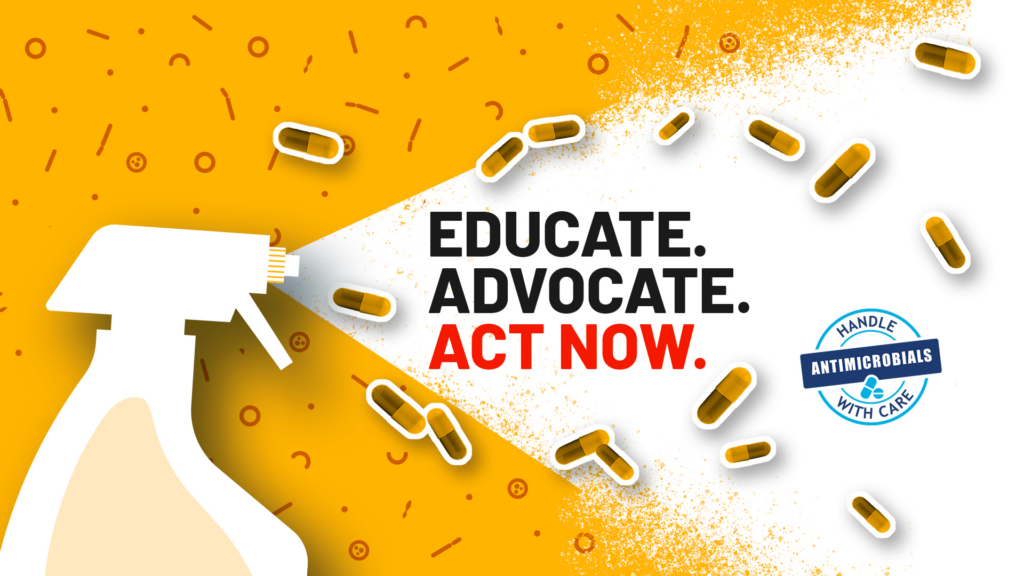World Antimicrobial Resistance Awareness Week 2024, observed from November 18 to 24, 2024, centers on the theme “Educate. Advocate. Act now.” This theme addresses antimicrobial resistance (AMR), a critical issue where bacteria, viruses, fungi and parasites develop resistance to treatments, making infections harder — or sometimes impossible — to treat effectively. The rise of drug-resistant infections significantly impacts human and animal health, food production and environmental safety.
Led by the World Health Organization (WHO), this year’s theme for World AMR Awareness Week 2024 urges global stakeholders to increase AMR awareness, drive commitments and take decisive action. Events like the 2024 United Nations General Assembly (UNGA) High-Level Meeting on AMR highlight the need for political and financial support to protect global health and prevent future crises.
A growing example of why collective efforts are needed is the rise in infections from Pseudomonas aeruginosa — a multi-drug-resistant bacterium. With treatments for these infections projected to grow from $2.34 billion in 2023 to $4.07 billion by 2034, demand for new therapies is climbing. Companies like Merck and Entasis are advancing treatments like ETX0282C, which shows potential in Phase III trials.
In this blog, we delve into various research avenues and treatment advances that could play a role in fighting AMR.
Forays into Antibiotic and Antimicrobial Resistance Research
AI’s Gene Sleuthing: Finding Resistance at the Source
A recent study in Frontiers in Microbiology highlights AI as a game-changer for identifying antibiotic resistance genes (ARGs). Using AI models like deep learning, researchers can spot novel ARGs more accurately, offering faster insights into resistance patterns. This tech-driven approach holds promise for tailoring treatments and curbing resistance spread.
Machine learning tools are transforming genome mining, allowing AI to identify antimicrobial compounds, like biosynthetic gene clusters, and predict resistance patterns early. Recent advances include AI-designed peptides and optimized algorithms that enhance drug efficacy while reducing resistance — showcasing AI’s growing impact on the future of AMR research.
Phage Therapy: A Viral Ally Against Bacterial Resistance
Phage therapy is showing potential in trials, with bacteriophages — viruses that attack bacteria — offering a targeted solution to drug-resistant infections. A systematic review delved into phage therapy’s success against hard-to-treat, drug-resistant infections, with bacterial eradication achieved in 87 percent of cases.
The precision of phages, targeting specific bacteria while sparing healthy microbiota, complements their potential to degrade biofilms — an asset in chronic infection control.
Algorithm Alerts: Better Antibiotic Choices in Real Time
In 2024, the INSPIRE trials introduced algorithm-driven alerts to help clinicians pick the best antibiotics for hospitalized patients with pneumonia and urinary tract infections (UTIs).
Involving over 220,000 patients, this approach improved antibiotic selection by 28 percent for pneumonia and 17 percent for UTIs, showing how real-time data can support antibiotic stewardship in hospitals.
Bangladesh’s Red Label Solution for Antibiotic Stewardship
To curb antibiotic misuse, Bangladesh has mandated distinctive red labels on antibiotic packaging, alongside warnings against self-medication. This initiative, backed by the WHO and other global stakeholders, aims to reduce over-the-counter antibiotic sales and improve public awareness of AMR.
By 2024, about 80 percent of pharmaceutical companies had adopted these packaging changes, marking a step forward in responsible antibiotic use and AMR prevention.
Gepotidacin Gains: New Hope for Resistant UTIs
GSK’s gepotidacin, which works differently from traditional antibiotics, recently completed Phase III trials for treating UTIs caused by resistant E. coli. Gepotidacin targets uncomplicated urinary tract infections (uUTIs) in female adults and adolescents. uUTIs are being increasingly caused by drug-resistant bacteria, leading to higher treatment failure rates.
The US Food and Drug Administration (FDA) has granted Priority Review for this application, with a decision expected by March 26, 2025.
Beyond these developments, many other initiatives are advancing AMR stewardship.
Cepheid, in partnership with the Fleming Initiative, is advancing diagnostics to guide precise antibiotic use, especially for drug-resistant infections like carbapenemase-producing Enterobacteriaceae. A new study showed that MolecuLight’s imaging technology has helped reduce unnecessary prescriptions in wound care by improving treatment accuracy, while EVŌQ Nano’s EVQ-218 nanoparticle offers a novel non-ionic approach to tackle drug-resistant bacteria.
Together, these innovations underscore the diverse, collaborative efforts in AMR stewardship, supporting the goals of World AMR Awareness Week.
WHO’s “Go Blue” campaign encourages individuals and organizations to wear light blue during World AMR Awareness Week, update social media profiles with blue themes and share their commitment to AMR awareness.
World AMR Awareness Week 2024 also aligns with US Antibiotic Awareness Week 2024, which focuses on antibiotic stewardship under the theme ‘Fighting Antimicrobial Resistance Takes All of Us.’












Join or login to leave a comment
JOIN LOGIN